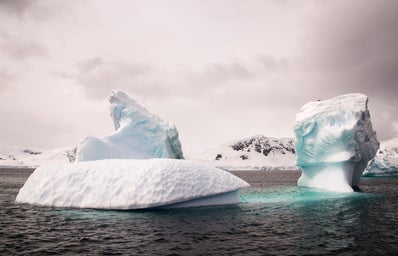As climate change continues to be an ongoing topic of discussion, there is no doubt that our Earth’s temperatures are rising. UNESCO World Heritage sites are considered to have “outstanding universal value” due to their rich cultural heritage, scientific understanding, historical values and more. These sites have been protected by the United Nations Educational Scientific and Cultural Organization since 1975. Due to increasing carbon emissions, studies conducted by the IUCN predict that a third of UNESCO World Heritage Sites’ glaciers will disappear by 2050. Yearly, these glaciers lose 58 billion tons of ice, which equals the yearly water used by Spain and France. The melted ice is responsible for 5 percent of global increased sea levels. UNESCO says the remaining two-thirds can be saved if average temperatures do not exceed 1.5 degrees Celsius compared to the pre-industrial era.
The glaciers affected by climate change span worldwide and make up 50 of the UNESCO World Heritage Sites. They represent 10 percent of the Earth’s total glacier volumes. This includes the highest peak of Mt. Everest and the vastest glacier land in Alaska. The last of the glaciers in Africa is predicted to melt. These glaciers are on Mt. Kilimanjaro and Mt. Kenya. One of the fastest dissipating glaciers is those at the Three Parallel Rivers National Park in China, losing about 57 percent of its mass in the past 20 years.
Glaciers in West Tien-Shan Kyrgyzstan, Uzbekistan, have decreased by 27 percent since 2000. The Pyrenees Mont Perdu’s glaciers in France and Spain will disappear by 2050. The same goes for the Italian Dolomites’ glaciers. The United States Yellowstone National Park is predicted to be among the disappearing glaciers. Along the Canadian and United States boards, the Waterton-Glacier International Peace Park has lost over one-quarter of its volume since 2002. Some notable endangered glaciers are Italy’s Dolomites, Argentina’s Los Alerces National Park, France’s Pyrenees, Pery’s Huascarán National Park and New Zealand’s Te Wahipounamu.
How will melting glaciers affect the world? One issue it poses is that people will face flooding and rising sea levels due to the melting glaciers. Half of humanity indirectly or directly depends on these glaciers as a water source for varying reasons such as domestic, agricultural, and power uses. These glaciers are also homes to biodiversity and feed different ecosystems.
Bruno Oberle, the general director of the International Union for Conservation of Nature, said, “When glaciers melt rapidly, millions of people will face water scarcity and the increased risk of natural disasters such as flooding, and millions more may be displaced by the resulting sea levels.” He later added that this study proves how necessary it is to decrease greenhouse gas emissions. Climate leaders are set to gather for the COP27 meeting to tackle climate change internationally. UNESCO publicly advocates for creating a worldwide grant for glacier preservation. This grant would fund the research, network with all stakeholders and create and apply risk reduction strategies. We must take care of our environment by monitoring carbon emissions because we only have one planet.
Want to see more HCFSU? Be sure to like us on Facebook and follow us on Instagram, Twitter, TikTok, YouTube and Pinterest!


